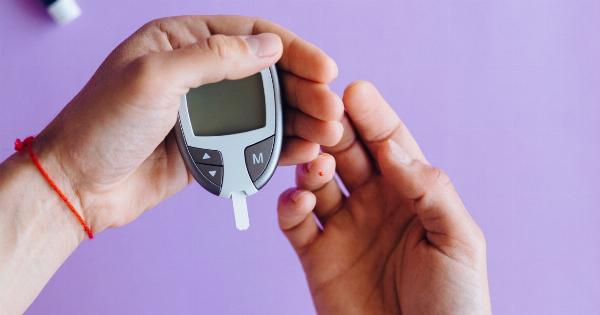Diabetes is a chronic illness that affects millions of people worldwide. It is a metabolic disorder where the body cannot properly produce or use insulin, which is a hormone that regulates blood sugar levels.
Sedentary lifestyle is one of the major risk factors for diabetes. A sedentary lifestyle is a type of lifestyle where people spend most of their time sitting or lying down, and often associated with a lack of physical activity.
This article will discuss some time-crunch survival tips if you have diabetes and a sedentary lifestyle.
1. Set Realistic Goals
When it comes to exercise, it is essential to set realistic goals for yourself. If you are new to physical activity, start small and gradually increase your intensity level.
For example, if you haven’t done any exercise before, start with a short walk around the block. As you get more comfortable, you can increase the distance and speed of your walk. Set a target for yourself and try to reach it, and then set a new one when you are ready. Remember, any physical activity is better than no physical activity.
2. Break Up Long Periods of Sitting
Anyone who has a sedentary lifestyle will naturally spend a lot of time sitting down. However, sitting for long periods of time can be harmful to your health, especially if you have diabetes.
When you sit for long periods, the muscles in your body are inactive, and this can cause your blood sugar levels to rise. It is essential to break up long periods of sitting to keep your blood sugar levels in check. Stand up and stretch every 30 minutes or so, take a short walk around the room, or do some light exercise such as walking or jogging in place.
Short bursts of activity work wonders and help keep your blood sugar levels in check.
3. Make Use of Commercial Breaks
If you’re someone who enjoys watching TV, you may want to consider using commercial breaks to sneak in some exercise. During commercial breaks, stand up and do quick activities like running in place, jumping jacks, or sit-ups.
If your favorite show doesn’t have commercials, you can set reminders on your phone to take a break and do a quick exercise routine. There are several mobile apps available that give 5-15 minutes workout plans that you can do anywhere, including your office or home.
4. Use Stairs Instead of Elevators
One of the easiest ways to incorporate physical activity into your daily routine is by taking the stairs instead of the elevator. Climbing stairs burns more calories than walking and can help you maintain healthy blood sugar levels.
If you work in a high-rise building, try walking up a few flights of stairs, and then take the elevator, if needed. Gradually increase the number of flights of stairs you climb each day.
5. Walk or Cycle to Work
If you live within a reasonable distance from work, consider walking or cycling instead of driving or taking public transportation. Walking or cycling is an excellent form of physical activity, and it also saves you money on transportation costs.
If you have a sedentary job, taking a brisk walk or cycling to work can help offset the effects of a sedentary job.
6. Join a Fitness Class or Group
Joining a fitness class or group is an excellent way to stay motivated and accountable for your physical activity.
Find a class that suits your preferences, whether it is yoga, dance, or strength-training, and make that class part of your regular routine. You can also join a walking or running group, where you can meet like-minded people who enjoy physical activity. Make it a social event, and have fun with it.
7. Use Resistance Bands and Weights
You don’t have to go to a gym to engage in resistance training, which is essential for maintaining healthy muscles and bones. Resistance bands and weights are easy to use and can be done at home, and they don’t take up a lot of space.
You can find several resistance band or weight-training videos online, and you can do them at your own pace and convenience.
8. Take the Long Way
If you are going to buy groceries, park your car in the furthest spot from the store and take the long way around. This will give you an opportunity to get some exercise and work up a sweat.
It’s also an excellent way to get some fresh air and sunlight, which is essential for regulating blood sugar levels.
9. Set an Alarm
If you often forget to move, try setting an alarm to remind yourself to stand up and stretch or do a quick exercise. Set an alarm on your phone or computer to go off at regular intervals during the day.
This will help you to be more active and can also help keep you focused and alert throughout the day.
10. Get Up and Move
You don’t need fancy equipment or an expensive gym membership to be active. Simple activities like gardening, cleaning your house, or playing with your kids can keep you moving and active.
Get up and move whenever possible, and you’ll be surprised at how much physical activity you can incorporate into your daily life.
Conclusion
A sedentary lifestyle is a significant risk factor for diabetes and many other health problems. However, with a few simple changes in your daily routine, you can incorporate physical activity into your life.
Set realistic goals, break up long periods of sitting, use commercial breaks, take the stairs instead of the elevator, walk or cycle to work, join a fitness class, use resistance bands and weights, take the long way, set an alarm and get up and move. These tips will help you to be more active and keep your blood sugar levels in check, even if you have a busy and stressful lifestyle.































